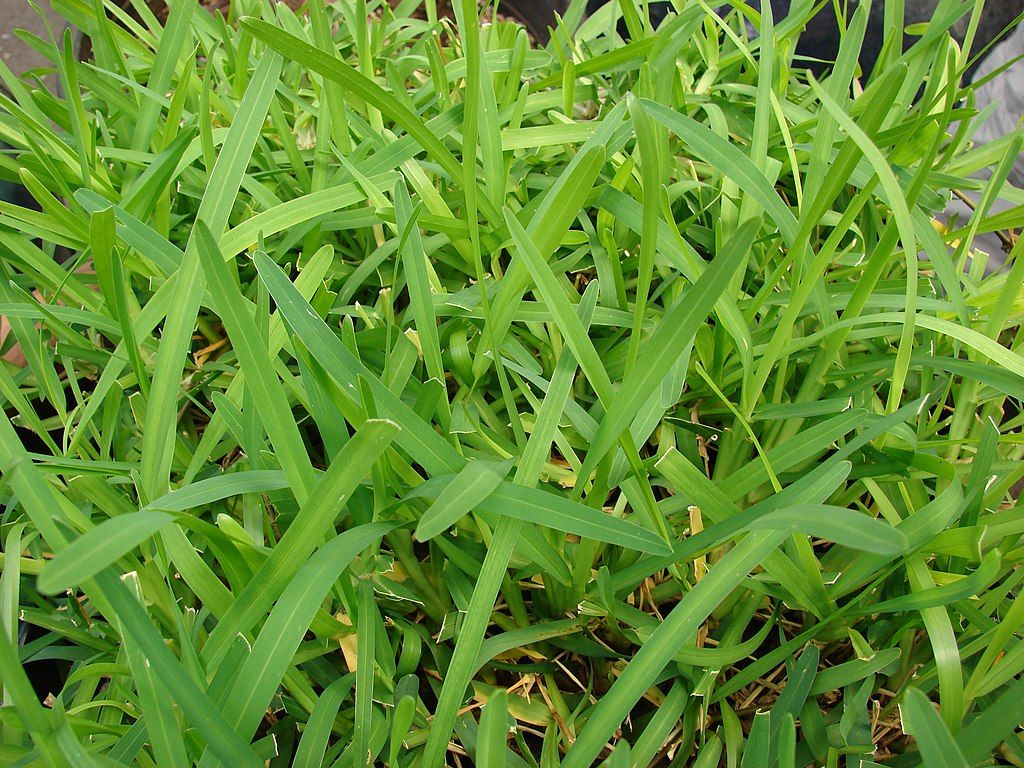
St. Augustine Grass is one of the most popular turf types in North Texas because it can tolerate both heat and humidity. Although it is not a native grass in our region, this warm-season turfgrass quickly gained popularity due to its look and feel—as well as its overall tolerance for various conditions and soil types. St. Augustine Grass can even tolerate some shade. 
When well-maintained, St. Augustine Grass looks and feels a lot like a luxurious green carpet.
Of course, the key is that it is cared for properly.
Whether you already have an existing St. Augustine lawn or you’re thinking about adding one, you might be wondering what’s involved with St. Augustine Grass care.
We’ve put together this guide on maintaining St. Augustine Grass in Texas so that you can have the lawn you desire.

One of the reasons that this grass type is so embraced is that it is relatively hardy and can tolerate a lot of different conditions. However, it will still require routine maintenance to continue to perform its best. This will be particularly true during warmer months when St. Augustine is growing at the fastest pace.
As with any turf type, there are a few key areas that you need to pay attention to when it comes to the care for St. Augustine Grass. These include proper mowing, proper watering, weed control, fertilization, thatch maintenance, and problem management (primarily disease and pest control).
We’ll cover each of these areas with the key information you need to know so that you can implement the proper care for St. Augustine Grass at your North Texas home.
Mowing is one of those services that most homeowners think of as simplistic (where you really can’t go wrong). But while mowing certainly isn’t rocket science, there is more to it than people realize.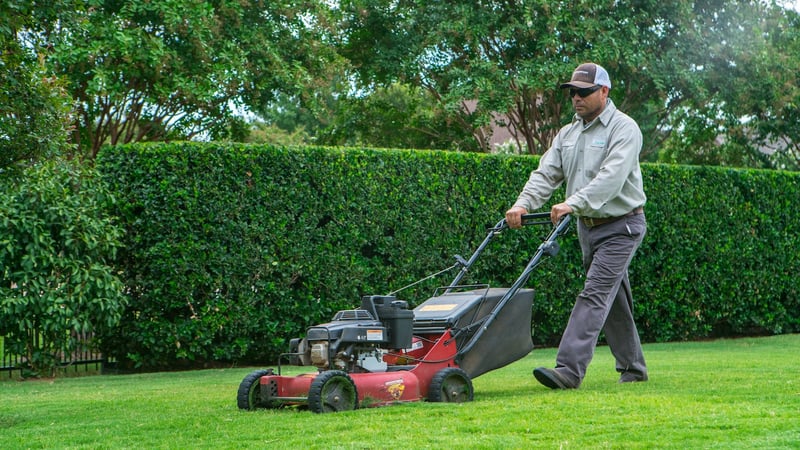
One big factor that people often fail to pay attention to is the mow height. Different grass types have different recommended mowing heights and when you cut grass too short, it puts a tremendous amount of stress on it. When mowing your lawn, you want to stick to the recommended height for the grass that you have.
For St. Augustine grass, the recommended cut height is 2 ½ to 4 inches.
If you mow shorter than that, your St. Augustine Grass will begin to thin out and cause problems, including weed invasion.
No matter what grass type you have in your North Texas lawn, be advised that you should ideally be cutting no more than one-third of the grass blade at a time. Anything more than that is putting too much stress on the plant. This means mowing weekly.
We also advise keeping mowing equipment in optimal shape, as this can also have an impact on the results. Most importantly is the condition of the blades. If you’re working with a mowing service, it’s important to find a pro who understands the vital importance of well-sharpened blades.
The trouble with mowing a lawn with dull blades is that you’ll get a jagged cut. This is difficult for the lawn to recover from. You want a nice, clean cut that will make it easier for the lawn to heal. That will help preserve the lovely green color that St. Augustine grass is known for (as opposed to it turning yellow and dull).
Proper watering is also essential to St. Augustine Grass care. In general, water is the lifeblood of a lawn and you want to make sure that you’re putting just the right amount down.
St. Augustine Grass can sometimes need a bit more water than other turf types. In general, St. Augustine grass needs about one inch of water per week (either via irrigation or rainfall). You may also need to take site conditions into account. High wind areas, for instance, may require more water due to faster evaporation.
And during hot weather and periods of drought, all lawns are going to need a bit more to drink.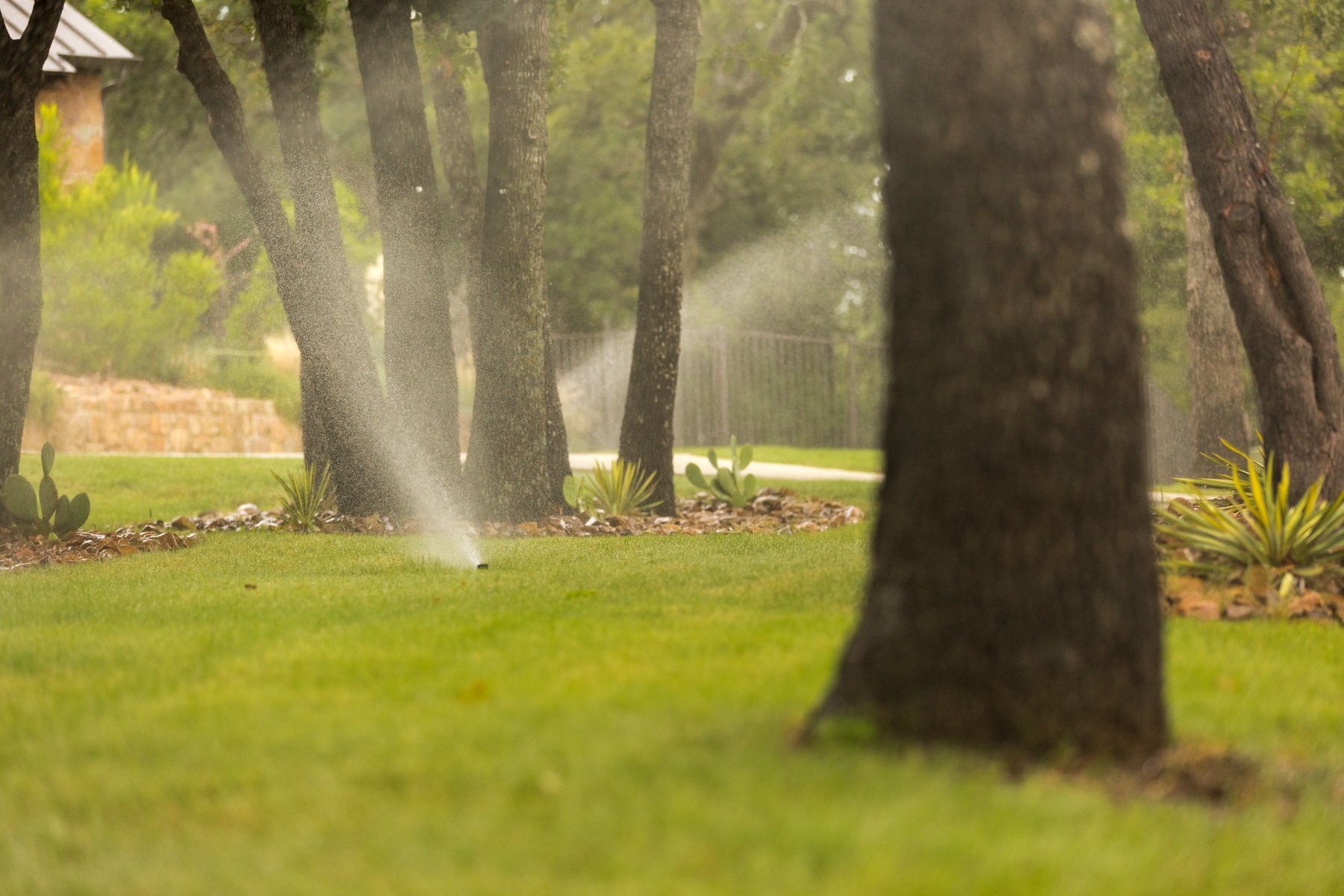
Of course most lawns here in North Texas have irrigation systems. Still, you want to make sure that your system is set to water at the optimal time. The best time to water a Texas lawn is in the early morning. This gives the soil time to soak in moisture before the sun causes it to evaporate. The wind is also slower earlier in the day.
As a general rule of thumb, we advise watering your lawn 3 to 4 days per week during the summer.
Like other grass types, St. Augustine Grass is not immune to pressure from weeds. We commonly see various grassy weeds creep into the lawns here in North Texas. But our hot weather makes a number of different weeds a potential problem.
The best defense against all weed types is a thick and healthy lawn, which is achieved with services like proper watering, proper mowing, and fertilization. But you also want an effective weed control program that will take a multi-faceted approach to targeting the different weeds that might be popping up in your St. Augustine lawn.
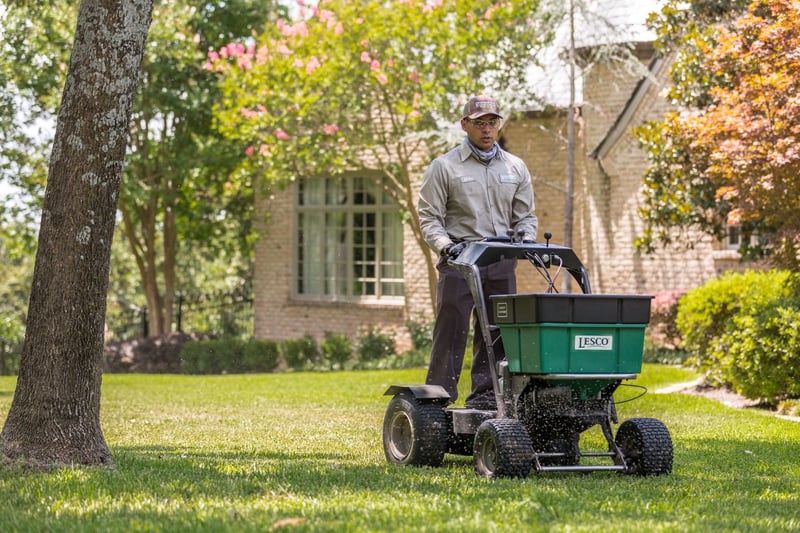
The fact is, weeds around here are persistent. Different times of the year can bring pressure from different weeds so it is not something you can become complacent on. Mowing properly, following appropriate watering schedules, utilizing consistent fertilization, and implementing an aggressive weed control approach can all work together to help promote a healthy St. Augustine lawn.
The nice thing about the potential thickness of St. Augustine grass is how well it will crowd out weeds when it’s growing healthy.
Care for St. Augustine Grass in Texas also requires proper fertilization. Lawn fertilization is what helps feed the grass, helping it to grow thick and healthy. It provides vital nutrients that your lawn needs to thrive.
St. Augustine Grass fertilization should begin 3 weeks after the grass turns green in the early spring. The lawn should continue to be fed during the most active growing season and can then be backed off when the lawn goes dormant. Here in North Texas, that means fertilizing between April and September.
Fertilizer must be watered in, so if there is no rain in the forecast after it is applied, plan on running your irrigation system for the recommended time based on your sprinkler heads.
Thatch maintenance is a natural part of St. Augustine lawn care. Because St. Augustine Grass grows so thick, it can accumulate a layer of thatch above the surface soil. This is a naturally-occurring, dead organic material that can build atop of the soil.
A little bit of thatch is not a problem. But a thick layer of thatch (anything from a half inch or more) can prevent nutrients, oxygen, and water from finding their way deep into the soil where they need to penetrate to the root zone.
A thick layer of thatch can also become a hangout spot for problematic pests like chinch bugs.
Dethatching is a service that can help break up a heavy layer of thatch.
In addition, lawn aeration can also assist with breaking up thatch by increasing the activity of soil microorganisms that decompose this layer.
Here in Texas, you can aerate lawns in both the spring and fall. If you were to pick just one season, we’d recommend spring, before entering the prime growing season. The loosened soil can also help make the fertilization application more effective. When you apply fertilizer atop of clay-like soil, it just sits there.
In terms of pests, chinch bugs and grubs are the two most serious threats in St. Augustine lawns. Let’s look at both so that you can perform the best St. Augustine lawn care.
Chinch bugs are a definite problem in St. Augustine lawns, where they like to hang out in the thatch layer that can form in this thick grass type. These small black/gray bugs are active in late summer and early fall. They are surface-feeding insects that feed on lawns by sucking out the plant fluids from the grass blades. This can cause your St. Augustine lawn to turn yellow and then brown (and ultimately die if the problem is not appropriately dealt with).
Chinch bugs can be difficult to spot due to their tiny size, but their damage will definitely become noticeable. If you have a St. Augustine lawn that is turning colors, a visual inspection should be performed.
Lawn grubs are sub-surface bugs that eat the roots of the lawn. Because they feed beneath the surface, they can be difficult to spot. Most of the time, people do not realize there’s an issue until it’s severe.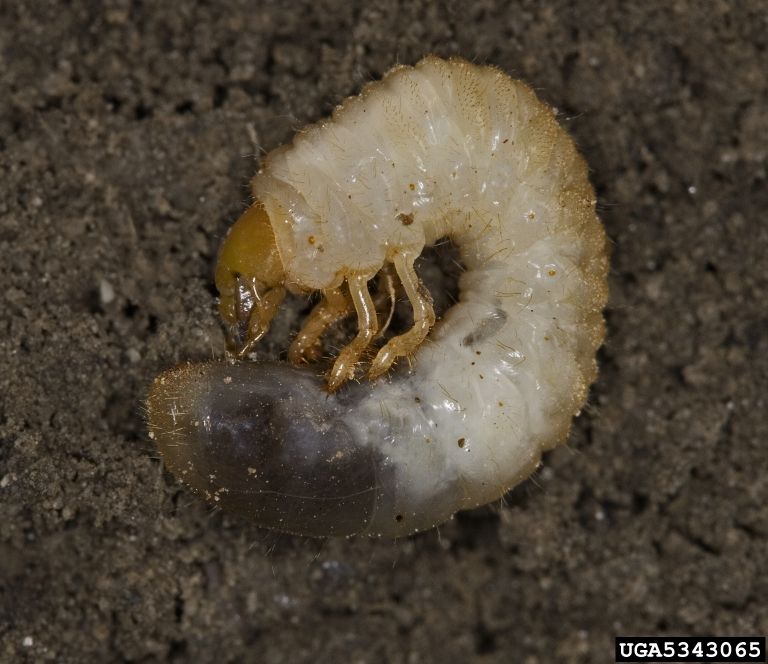 With grub damage, the grass will be pulling up (since the roots have been eaten). If the damage is bad enough, homeowners may need to re-sod in areas where they experienced grub problems.
With grub damage, the grass will be pulling up (since the roots have been eaten). If the damage is bad enough, homeowners may need to re-sod in areas where they experienced grub problems.
Fortunately, grub prevention can be applied to lawns in the spring season.
Of course, St. Augustine Grass is not immune to other potential problems, such as lawn disease. One potentially destructive fungus that can plague a St. Augustine lawn is Brown Patch. This is caused by a fungus that thrives during warm and humid weather conditions. The disease begins as circular patches on the lawn and then grows outward as it spreads.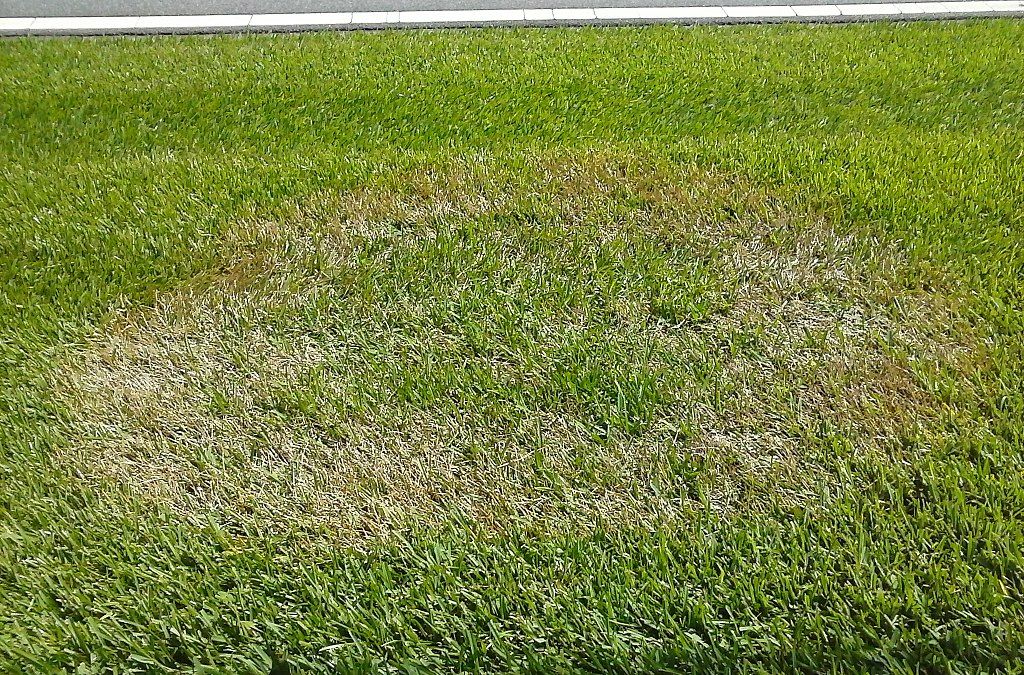
Because diseased grass can often mimic under-watered grass (by looking yellow or brown), watering is often the first thing that homeowners do when they see these symptoms. Unfortunately, overwatering can cause a disease like Brown Patch to spread. That’s why it’s so important that a proper diagnosis is made.
Getting rid of lawn fungus will require professional applications of fungicide. Ideally, if you are using a lawn care program, a lawn care technician can help you spot the early signs of disease and get it under control before it gets serious.
We understand that caring for your St. Augustine lawn can feel like an overwhelming task. There’s a lot involved and it might be more than you want to handle on your own.
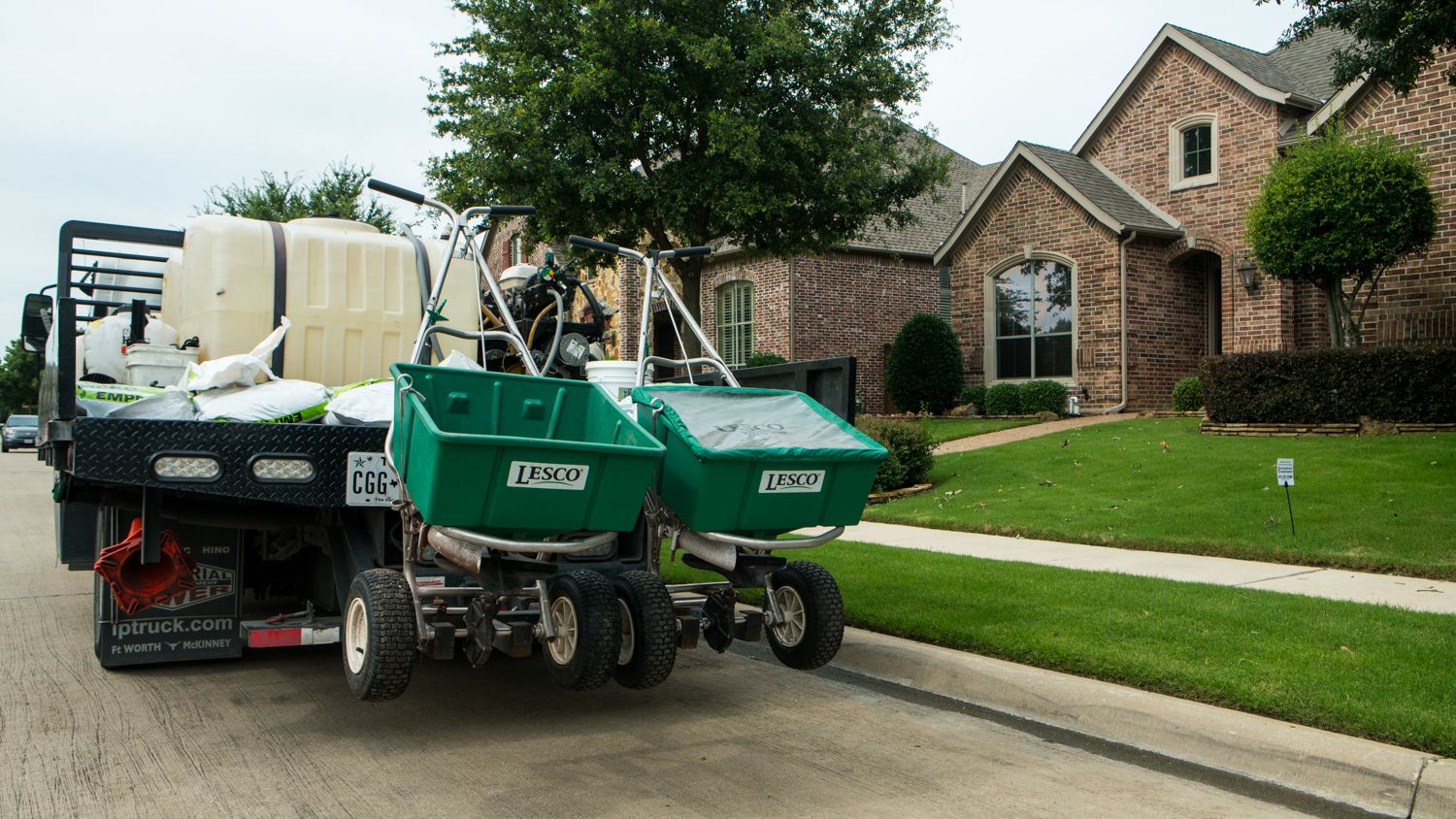
Fortunately, you don’t have to.
Instead, you can hire a professional to provide your St. Augustine grass maintenance (as well as your property’s other needs). This can also help ensure that problems are spotted early and dealt with properly.
For us, it’s all about providing peace of mind to our clients. When you’re a Grassperson client, you can count on us to keep a close eye on your lawn—and to make recommendations whenever they’re needed. We’re always looking out for you.
This takes the worry out of your hands and only leaves you with the benefits—a fantastic-looking lawn. After all, you likely chose a St. Augustine lawn because you want one that is lush and beautiful. You want to be sure that you keep it that way.
Do you want us to handle your St. Augustine lawn care in or around Flower Mound, TX? Get a Free Quote, then you can enjoy the best lawn on the block!
Image Source: st. augustine grass, grub, brown patch
These Stories on Lawn Care